Looking and Listening
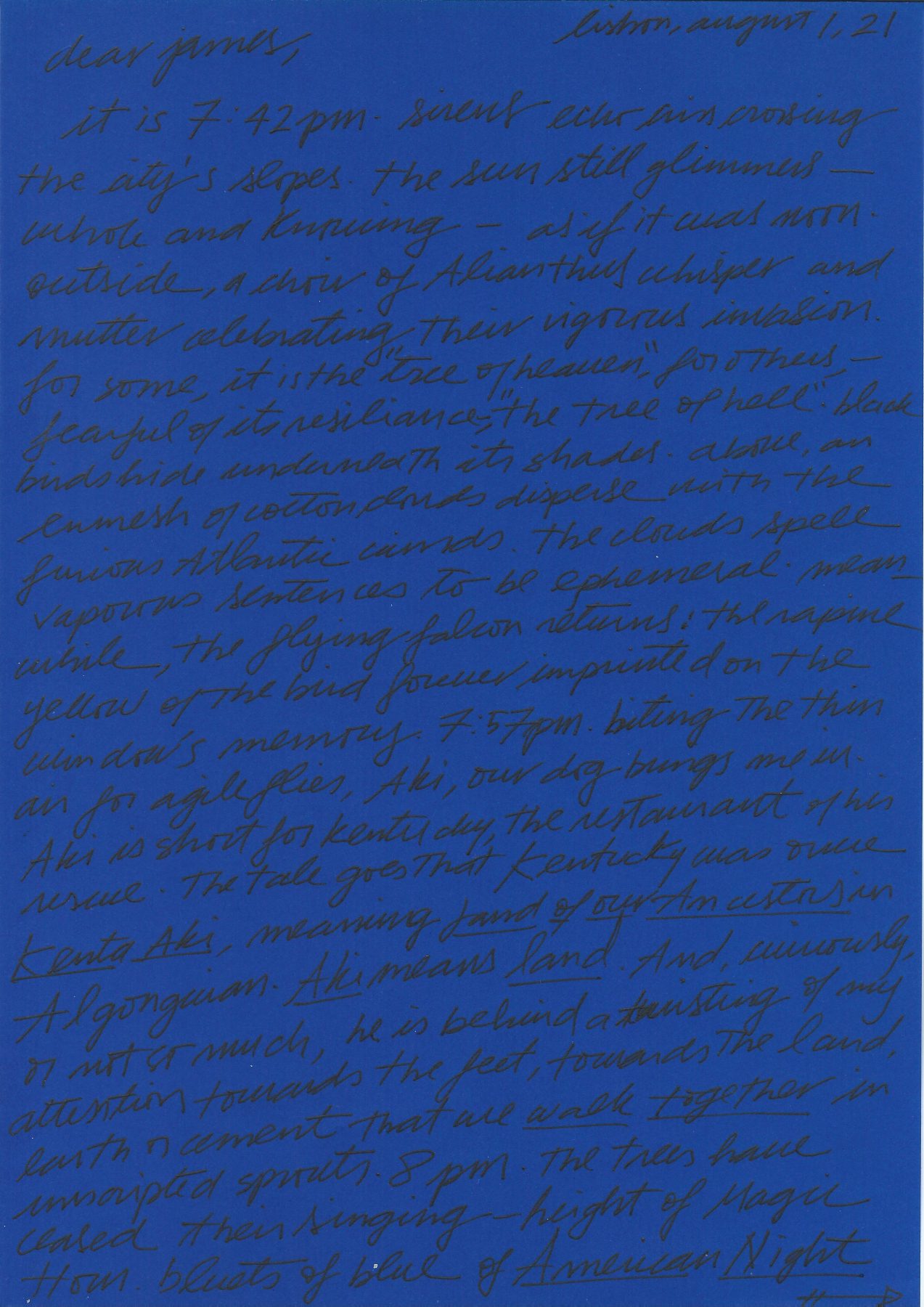
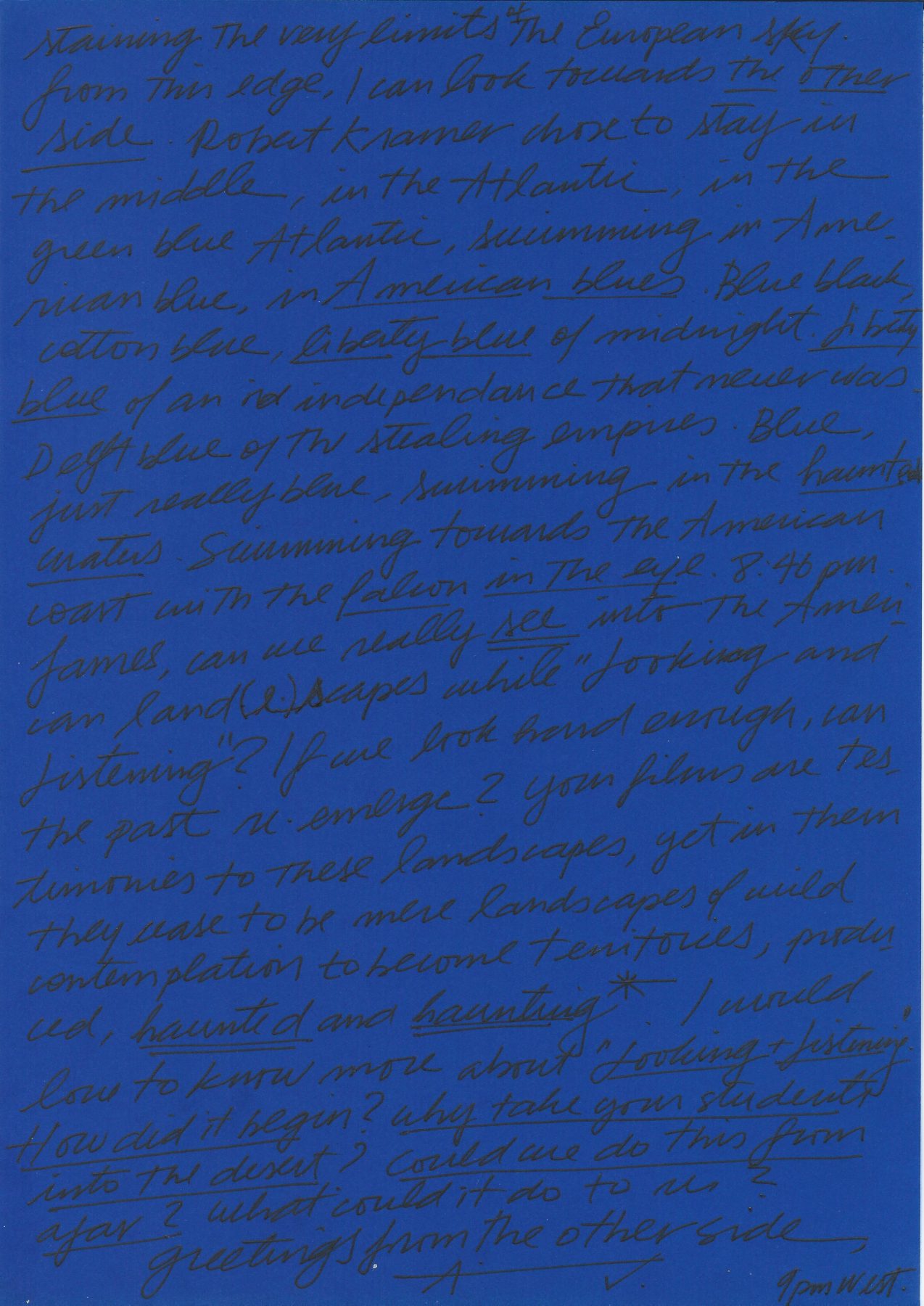
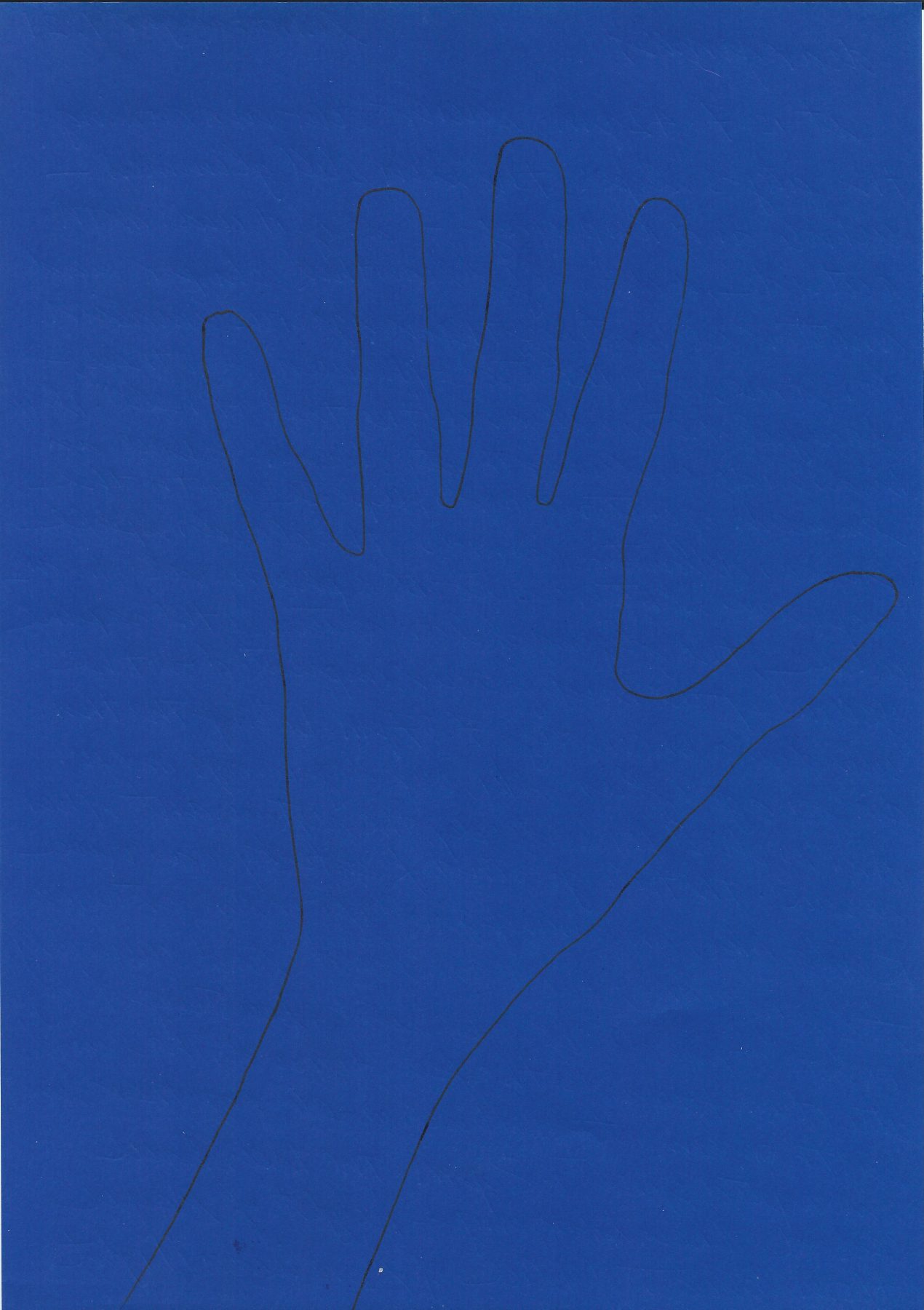
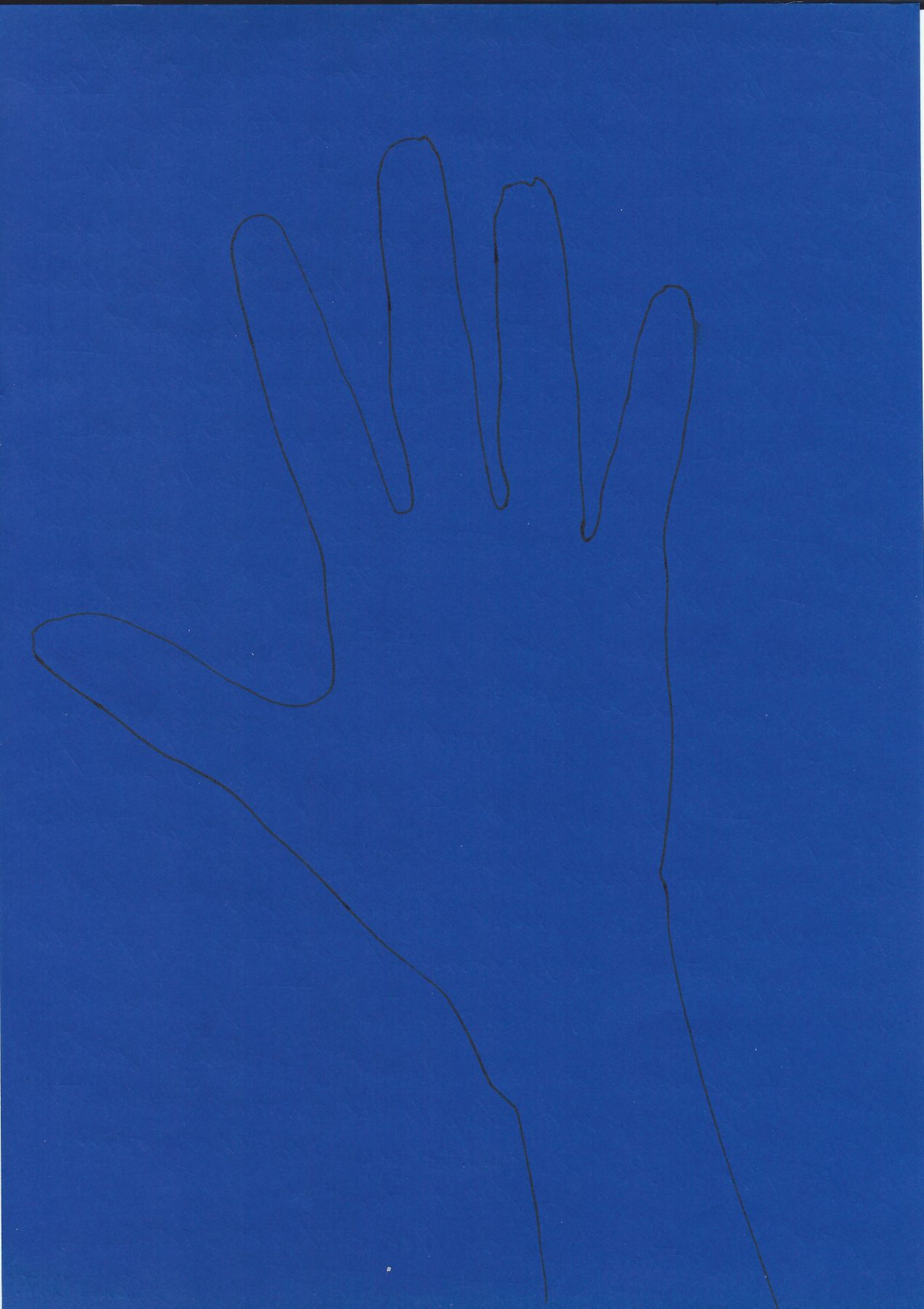
dear james,
it is 7:42 pm. sirens echo criss crossing the city’s slopes. the sun still glimmers — whole and burning — as if it was noon. outside, a choir of Alianthus whisper and mutter celebrating their vigorous invasion. for some, it is the tree of heaven, for others, distressed by its resilience, the tree of hell. black birds hide underneath their shades. above, an enmesh of cotton clouds disperse with the furious Atlantic winds. the clouds spell vaporous sentences intended to be ephemeral. meanwhile, the flying falcon returns: the rapine yellow of the bird forever imprinted on the window’s memory. 7:57pm biting the thin air for agile flies, Aki, our dog, brings me in. Aki is short for Kentucky, the chicken restaurant of his rescue. the tale goes that Kentucky was once Kenta Aki, meaning Land of our Ancestors in Algonquian. Aki means land. and, curiously, or not so much, he is behind a twisting of my attention towards the feet, towards the land, earth or cement that we walk daily in unscripted sprouts. 8pm the trees have ceased their singing. height of magic hour. bluets of blue of American night staining the very limits of the European sky. from this edge, I can look towards the other side. Robert Kramer chose to stay in the middle, in the Atlantic. in the blue green Atlantic, swimming in American blue, in American blues. blue black, cotton blue. liberty blue of midnight. liberty blue of the independence that never was. delft blue of the stealing empires. blue, just really blue, swimming in the haunted waters. swimming towards the American coast with the falcon in the eye. 8:46pm James, can we really see into the American land·e·scapes while “Looking and Listening”? if we look hard enough, can the past re-emerge? your films are testimonies to these landscapes, all the while ceasing to be mere landscapes of wild contemplation to become territories, produced, haunted and haunting. i would love to know more about Looking and Listening. how did it begin? why take your students into the Californian desert? do you think we could do this from afar? what could it do to us?
greetings from
the other side,
ana
9pm, WEST
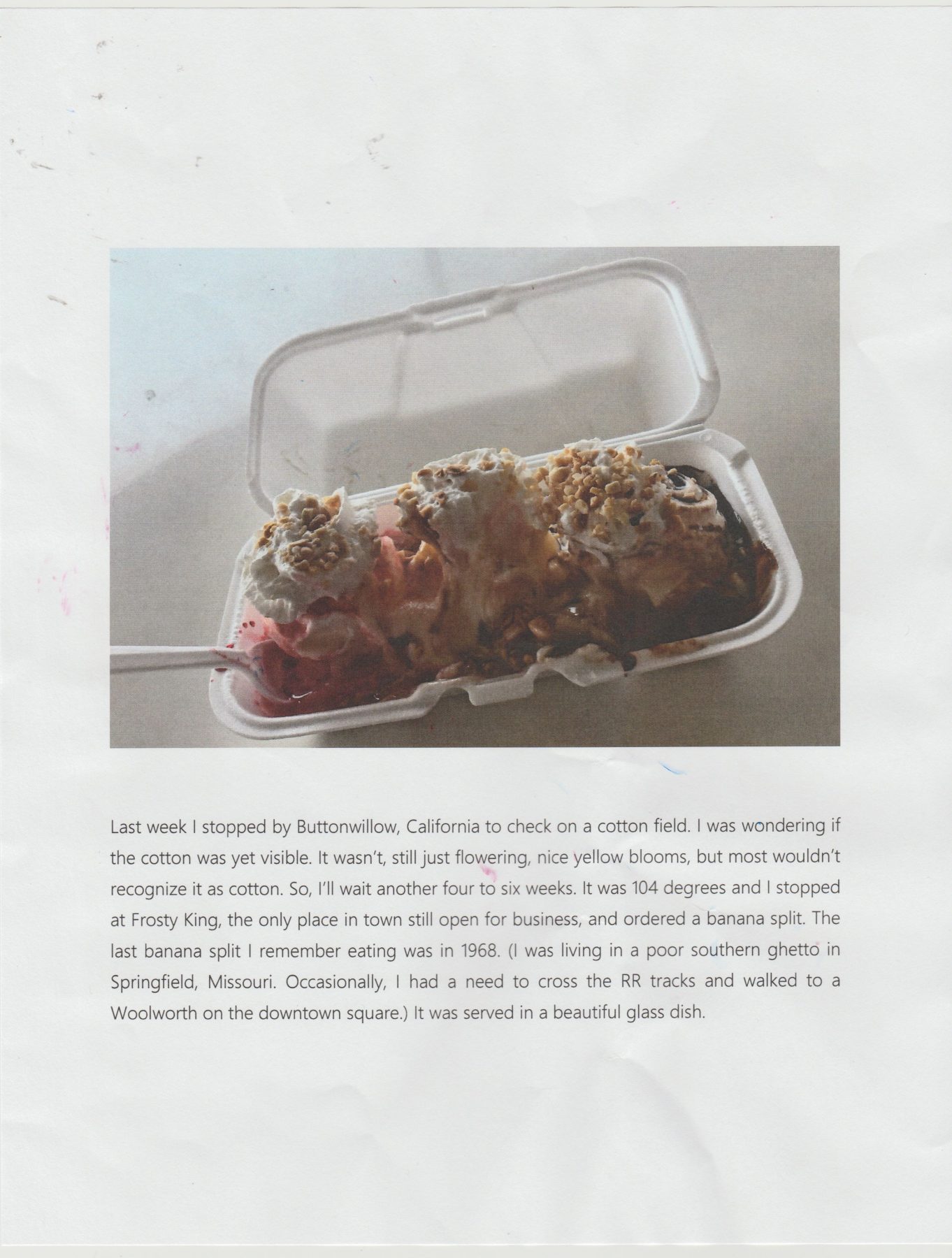
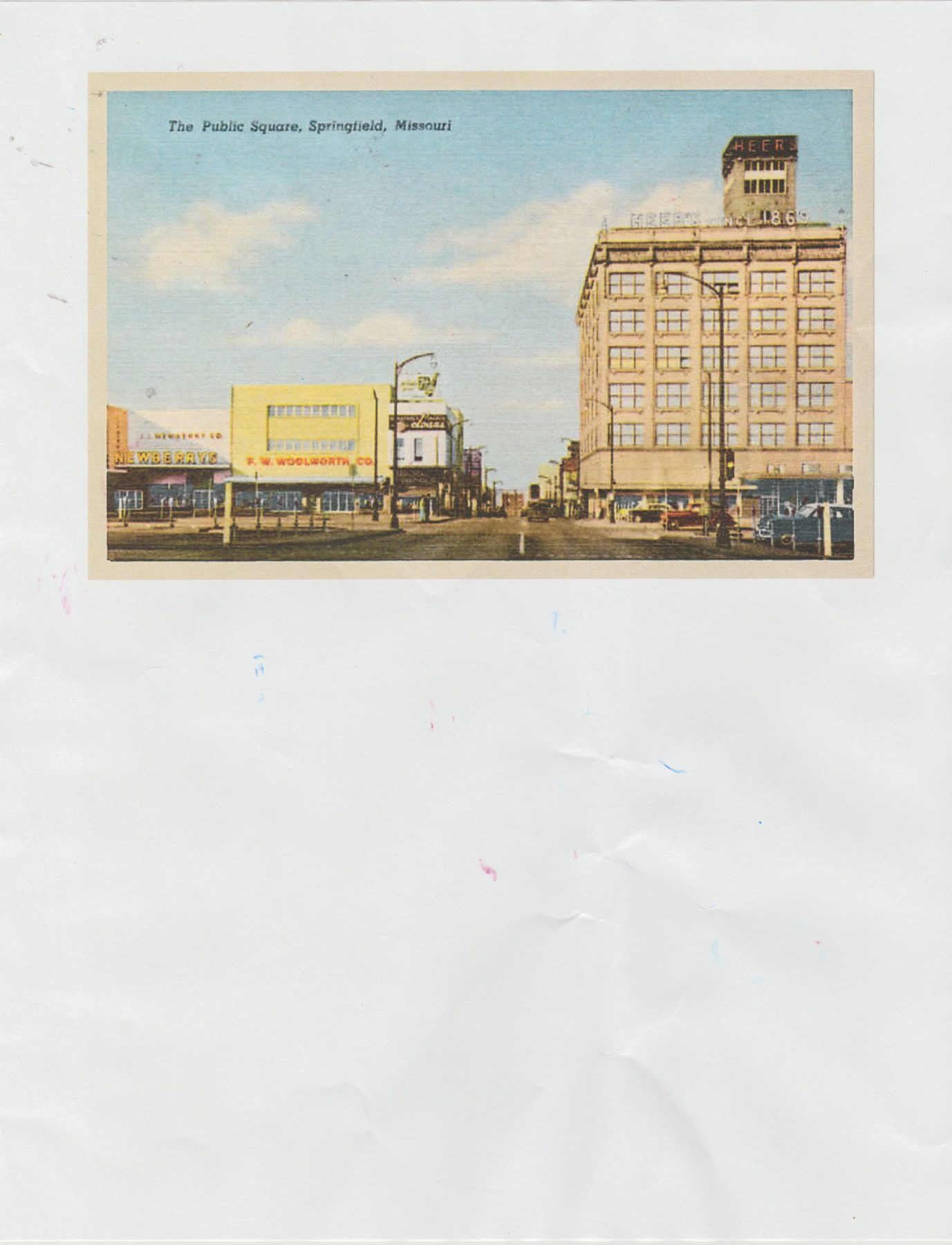
James Benning, born in 1942 in Milwaukee, USA, began working as an independent filmmaker in 1972, even before studying film at the University of Wisconsin. From 1977 to 1980 he taught at the universities of California and Oklahoma, then moved to New York to continue his work as an independent filmmaker. In 2009 he switched from 16mm to digital filmmaking. Since then his work has included installation and site specific art with many shows in galleries and museums. Besides his current film/art work, Benning has taught at the California Institute of the Arts since 1987. Benning has employed diverse methods, themes, structures, and aesthetics, investigating narrative and anti-narrative modes, personal history, race, collective memory, place, industry, and landscape. His philosophy of “landscape as a function of time,” and “Looking and Listening” (which is also the name of a course taught by Benning) is particularly evident in his films since 1999 in the form of fixed, stable shots.